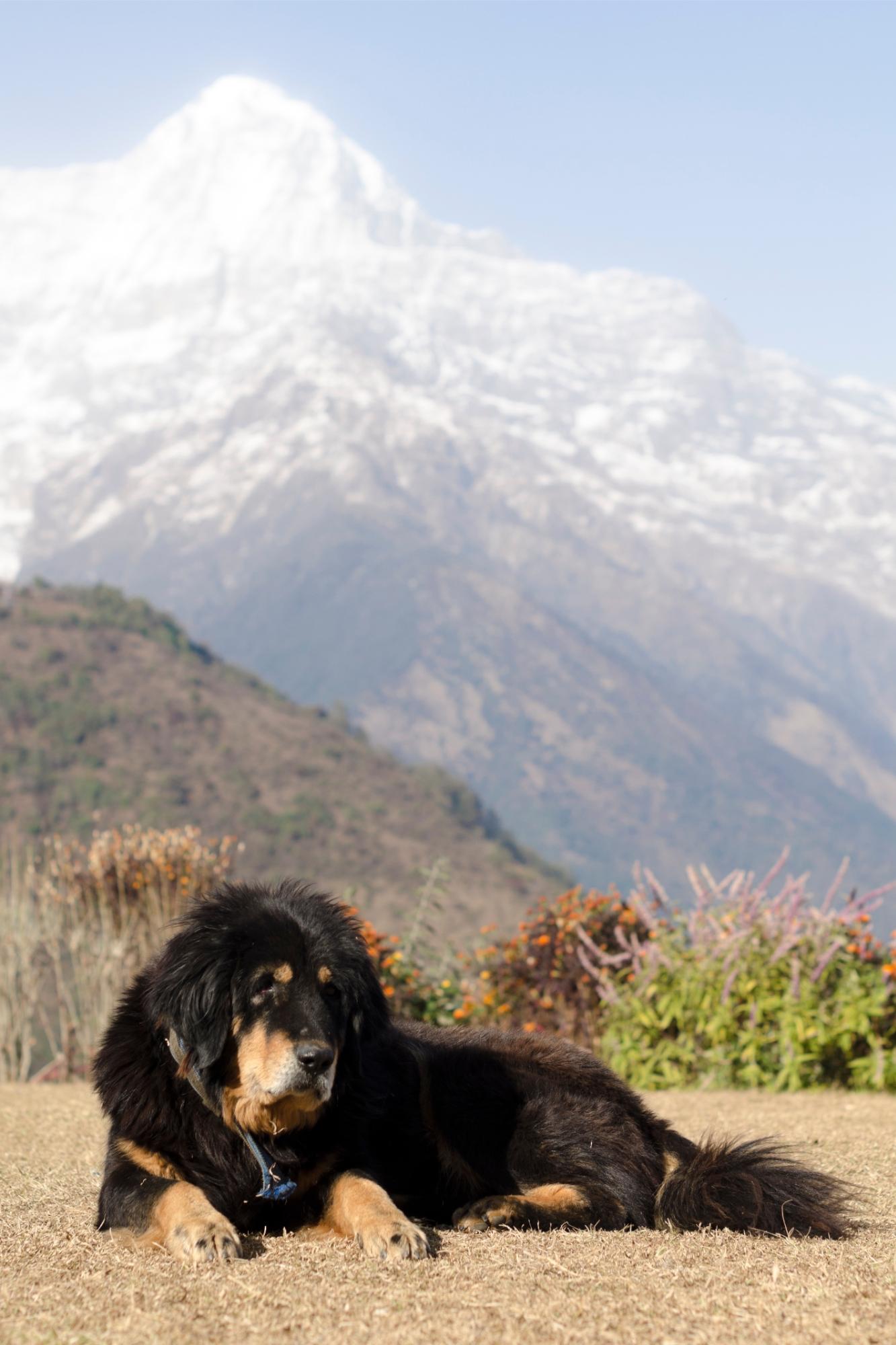HIMALAYAN SHEEPDOG
| Group: | Working Group |
|---|---|
| Size: | Large |
| Temperament: | Intelligent, Aware and Territorial |
| Height: | 24-30 Inches (male), 24-28 Inches (female) |
| Weight: | 37-42 Kg (male), 32-38 Kg (female) |
| Life Expectancy: | 10-11 years |
| Origin: | India/Nepal |
| Coat Length: | Long |
| Coat Type: | Double |
| Color: | Beige Black Light Brown |
About
The Himalayan sheepdog, also known locally as the Bhotia, Bangara, or Gaddi kutta and occasionally referred to as the Himalayan mastiff, is a large breed with a muscular and sturdy physique .From Eastern Nepal to Kashmir, the Himalayan foothills are home to the Himalayan Sheepdog. They have a broad head, strong jaw, and deep chest, and their ears are usually small and erect. The breed is primarily used as a livestock guardian, protecting flocks of yak and sheep from various predators, and as a property guard. Hunting assistance is another use for Himalayan sheepdogs.
Nutrition
The optimal diet for these dogs, like with the majority of big primitive breeds, consists of raw/fresh foods such as lean meats, fresh vegetables and fruits, eggs, fish, and other natural foods. They don't need a particular diet of any type. The dog's food ought to have a specific quantity of vitamins and minerals for a healthy diet. It supports the immune system and promotes healthy skin, hair, and nails. Fresh water that is clean should always be accessible.
Ideal Meal Breakdown
Protein
30
Fat
19
Carbohydrates
43
Others
8
Exercise
Every Himalayan Sheepdog needs a lot of exercise every day to stay active, healthy, and content over time.Give them enough space to run about and burn off energy on their own while taking them on walks. These enormous mastiff canines should not be kept in an enclosed area for an extended amount of time.These dogs should take daily, outdoor walks that last at least 30 minutes each. Additionally, they can spend time with other household dogs playing fetch or engaging in rough play in a fenced-in yard. Owners can engage in physical and mental stimulation indoors by playing games like tug of war and hide-and-seek when the weather isn't conducive to outdoor exercise.
Grooming
These dogs have thick, dense hair that sheds continuously. In order to minimise shedding and maintain a glossy, healthy coat, they need to be brushed at least twice a week. They do a great job of keeping themselves clean, so they don't need baths. This breed must be completely dried off after getting wet from rain or from playing in soggy grass. They risk having a musty coat if they don't.
Training
Himalayan Sheepdogs can become aggressive and strong-willed without obedience training, which could be a problem for families, especially those with young children. This breed is extremely intelligent and adept at self-learning. The breed is not only clever, but also quite simple to train. Although it could be challenging to train them to regularly do dog tricks for you, obedience and socialisation classes shouldn't pose any difficulties. The Gaddi are as devoted as they are eager to learn for their master.
Health
They appear to be a strong and healthy breed. Only dogs who were immune to parasites and diseases survived in the Himalayas because weak canines cannot thrive there. As a result, the dog has a strong immune system and no signs of having received poor genetic inheritance. The majority of canine illnesses appear to be impervious to the breed. Nonetheless, they are susceptible to some of the same conditions that any large dog would, such as arthritis and hip/elbow dysplasia. If the breed does not get enough activity or a healthy diet, they are more likely to become obese.
History
The Himalayan sheepdog is an extraordinary mountain dog native to northern India's western Himalayas and Himachal Pradesh, as well as Nepal. They were primarily developed for hunting, but they mastered herding and protecting sheep and goats as well. They can drive away snow leopards and panthers while independently locating stray animals thanks to their strength and intelligence. The Himalayan Sheepdog is a strong, agile breed with a disputed ancestry that belongs to the Mastiff and Molosser family. Some people think they are related to Tibetan Mastiffs and dingo-like wild hounds from the Himalayas. While pure lines are rare outside of the Himalayas, the breed is also seen in Pakistan, where it has been mated with German Shepherds and Bully Kuttas.
